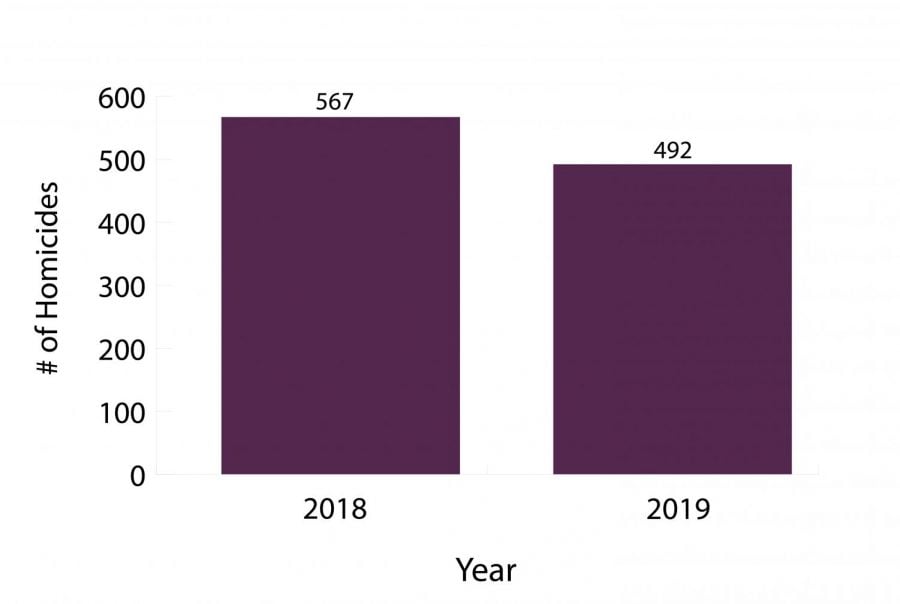Chicago homicide rate decreases for 3rd straight year
January 29, 2020
The number of people killed in Chicago dropped from 567 in 2018 to 492 in 2019, marking a 13 percent decrease and the third year in a row where homicides have declined in Chicago.
The drop in homicides follows one of Chicago’s deadliest years on record — in 2016, the city saw 762 murders, 3,550 shooting incidents and 4,331 shooting victims. From 2015 to 2016 there was a 42 percent increase in homicides.
In May 2018, political science Prof. Wesley Skogan worked with Northwestern’s Institute for Policy Research to offer insights on reducing violence in Chicago. Skogan said the dramatic decline in homicides over the past three years was a result of a sharp increase in violence in 2016.
“There had been a three year decline because in that first year there was an enormous spike,” Skogan said. “There was an increase of 35 percent in the measures of violence that I use, which is a huge spike. It was the third biggest crime spike in the city’s history.”
Skogan, who is also in the process of writing a book on crime in Chicago, said there were three reasons as to why the homicide rate increased in 2016: a collapse in the ability for Chicago police to solve crimes, a decline in public support for the police and an increase in the size of bullets and high capacity magazines.
The surge in homicides in 2016 was also “overwhelmingly” concentrated in black communities, Skogan said.
The Chicago Police Department has not released its 2019 annual report on crime, but the Chicago Tribune has tracked murders that have taken place in the last 365 days. According to the Tribune, of the 526 homicides in the last 365 days, 333 of those victims — or 63 percent — were black.
Skogan attributed the disproportionate amount of violence in black neighborhoods to Chicago’s declining black population and the high concentration of black individuals in select neighborhoods.
It is difficult to confirm specific reasons for the decrease in homicides, Skogan said.
However, Kim Smith, the associate director of criminal justice initiative at the UChicago Urban Labs, said a 2017 policy implemented in the Englewood police district might have helped.
“We saw that the introduction of an initiative called the Search and Decision Support Center led to a 26 percent reduction in shootings in that particular district,” Smith said.
Smith said the program allowed police commanders to use information they have already collected on crime pattern to target their enforcement activities.
She added that it was important to provide adequate and appropriate anti-gun violence resources to the communities most affected by homicides and shootings.
“One thing we believe at the Crime Lab that is really important is to understand where the problem is most acute and to target resources to the population of individuals might benefit most from those programs,” Smith said.
However, in the three years that homicide rates have decreased, Skogan and Smith both said it is difficult to credit any one initiative or policy with the decrease in homicides.
“2016 was a huge spike, and the nature of spikes is that they go away,” Skogan said. “There was a confluence of things (to explain the decrease) and we only vaguely understand why.”



